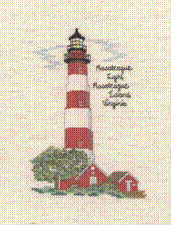
Jupiter, Florida
Soon after the lighting of the lighthouse, the
Civil War broke out and the
Confederates put out the light. Confederate sympathizers removed the lighting apparatus and buried it in Jupiter Creek.
When the war ended, the newly appointed keeper Captain James Amour, recovered it and the light was relit in 1866.
Captain Amour served
for forty years as the keeper, one of the longest in Lighthouse Service records.
This light has continued to perform its dual function
of warning ships about the shoals in the area and serving as a seacoast beacon.
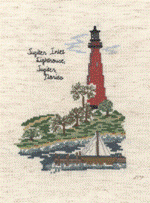
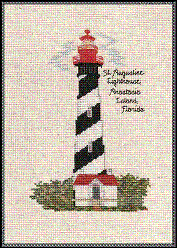
St. Augustine Lighthouse,
Augustine Island, Florida
In 1872, construction began
on the new tower, and by the middle of summer the foundation had been laid and
the brickwork carried up a few feet. At this point, funds ran out. At this time,
too, erosion continued to assault the beach, and drastic measures were taken by
constructing a jetty of brush and coquina from the nearby quarry to halt
erosion. coquina is a soft limestone composed of shells and coral. this method
had been used in the construction of Castillo de San Marcos
across the harbor. The coquina jetty lasted long enough to complete the
construction of the lighthouse.
In 1872, construction began on the new tower, and by the middle of summer the foundation had been laid and the brickwork carried up a few feet. At this point, funds ran out. At this time, too, erosion continued to assault the beach, and drastic measures were taken by constructing a jetty of brush and coquina from the nearby quarry to halt erosion. coquina is a soft limestone composed of shells and coral. this method had been used in the construction of Castillo de San Marcos across the harbor. The coquina jetty lasted long enough to complete the construction of the lighthouse.
St. Simons Island Lighthouse,
St. Simons, Georgia

During
America’s Civil War, Confederate troops constructed Fort Brown on the
lighthouse property. The fort was abandoned and the lighthouse blown up
by the Confederate forces in 1862 to prevent its use by Federal troops.
At the end of the war the Lighthouse Board elected to replace the
lighthouse with a 100-foot conical white tower attached to a brick
keeper’s quarters. Sickness plagued the work crew, but work was
eventually completed, and the lamp illuminated on September 1, 1872. The
light came from a third-order lens whose focal plane was 104 feet above
sea level.

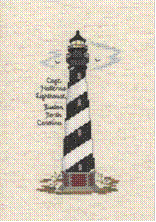
Cape Hatteras Lighthouse,
Buxton, North Carolina
Most
recently, the “Move of the Century” took place in the summer of 1999, when
International Chimney Corporation moved the Cape Hatteras Lighthouse
approximately 3000 feet south and inland of its original location. It was
relit in the fall of the same year and work was completed in the spring.
Visitors may climb the 200-plus steps to the top to see the spectacular view
of Cape Hatteras

Assateague Light’s red and white markings are painted with a glossy paint, giving the tower a remarkable sheen when the sun shines on it. While many lighthouses suffer from beach erosion, this tower stands on firm ground. Much sand has accumulated over the years, and now the tower stands a mile from the beach. It is within the bounds of the Chincoteague National Seashore, known for its wild ponies and wildlife refuge.
Colonists landed here before moving on to settle
in Jamestown in 1607, and many of the well-known names of Virginia and the establishment of the United States had stepped foot
here as well. Cape Henry Lighthouse is located on the grounds of Fort Story, first established as Cape Henry Military Reservation.
Once managed by Fort Monroe in Hampton, this army base was part of the line of defenses protecting the coastal waterways between
Cape Henry and Baltimore.
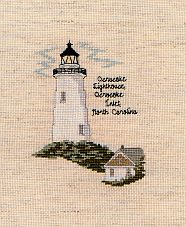
Ocracoke was home base for Blackbeard the Pirate, Edward Teach. With a bounty on his head, he literally lost it when
British troops caught up with him in 1718. During the Civil War,
Confederate and Northern troops controlled the lighthouse.
Confederate troops removed the lens from the lamp in the early years of the war, while Union troops replaced it.
The original fourth-order lamp was destroyed but was replaced after the war. That lens remains today. 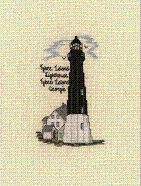
Tybee Island, Georgia
In 1857, the Lighthouse Board fitted this lighthouse with a second-order
Fresnel lens. Because of damage during the Civil War, the lighthouse needed repairing which resulted in the upper portion being torn
away and rebuilding it. Its height was raised to 145 feet, and was fitted with a first-order lens. The keeper relit the lamp on October
1, 1867. Though shaken by earthquakes and gale-force winds, the tower still stands. The tower is a monument to the skill of the colonial
workers and their 19th century successors.